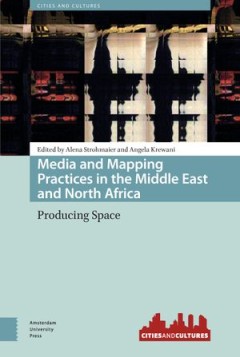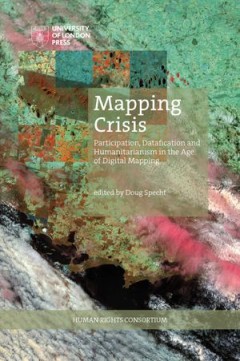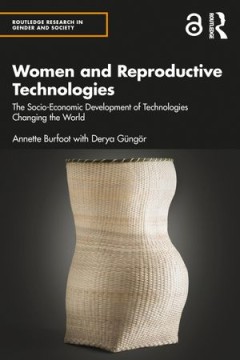Filter by

Allegories of the Anthropocene
In Allegories of the Anthropocene Elizabeth M. DeLoughrey traces how indigenous and postcolonial peoples in the Caribbean and Pacific Islands grapple with the enormity of colonialism and anthropogenic climate change through art, poetry, and literature. In these works, authors and artists use allegory as a means to understand the multiscalar complexities of the Anthropocene and to critique the v…
- Edition
- -
- ISBN/ISSN
- 9781478004103
- Collation
- -
- Series Title
- -
- Call Number
- -

Indian Water in the New West
Brings together the views of engineers, lawyers, ecologists, economists, professional mediators, federal officials, an anthropologist, and a Native American tribal leader--all either students of these processes or protagonists in them--to discuss how the legitimate claims of both Indians and non-Indians to scarce water in the West are being settled.
- Edition
- -
- ISBN/ISSN
- -
- Collation
- -
- Series Title
- -
- Call Number
- -

In Defense of La Raza The Los Angeles Mexican Consulate and the Mexican Comm…
Mexican communities in the United States faced more than unemployment during the Great Depression. Discrimination against Mexican nationals and similar prejudices against Mexican Americans led the communities to seek help from Mexican consulates, which in most cases rose to their defense. Los Angeles’s consulate was confronted with the country’s largest concentration of Mexican Americans, f…
- Edition
- -
- ISBN/ISSN
- -
- Collation
- -
- Series Title
- -
- Call Number
- -

Frontiers of the Caribbean
The book argues that the frontier, usually associated with the era of colonial conquest, has great, continuing and under explored relevance to the Caribbean region. Identifying the frontier as a moral, ideational and physical boundary between what is imagined as civilization and wilderness, the book seeks to extend frontier analysis by focusing on the Eastern Caribbean multi island state of St.…
- Edition
- -
- ISBN/ISSN
- -
- Collation
- -
- Series Title
- -
- Call Number
- -

Casa Pueblo A Puerto Rican Model of Self-Governance
- Edition
- -
- ISBN/ISSN
- 9781643150291
- Collation
- -
- Series Title
- -
- Call Number
- -

Media and Mapping Practices in the Middle East and North Africa: Producing Space
A few months into the popular uprisings in the Middle East and North Africa (MENA) region in 2009/10, the promises of social media, including its ability to influence a participatory governance model, grassroots civic engagement, new social dynamics, inclusive societies and new opportunities for businesses and entrepreneurs, became more evident than ever. Simultaneously, cartography received ne…
- Edition
- -
- ISBN/ISSN
- 9789048541508
- Collation
- -
- Series Title
- -
- Call Number
- -

Mapping Crisis: Participation, Datafication and Humanitarianism in the Age of…
The digital age has thrown questions of representation, participation and humanitarianism back to the fore, as machine learning, algorithms and big data centres take over the process of mapping the subjugated and subaltern. Since the rise of Google Earth in 2005, there has been an explosion in the use of mapping tools to quantify and assess the needs of those in crisis, including those affected…
- Edition
- -
- ISBN/ISSN
- 9781912250332
- Collation
- -
- Series Title
- -
- Call Number
- -

Cultures of Anti-Racism in Latin America and the Caribbean
Latin America’s long history of showing how racism can co-exist with racial mixture and conviviality offers useful ammunition for strengthening anti-racist stances. This volume asks whether cultural production has a particular role to play within discourses and practices of anti-racism in Latin America and the Caribbean. The contributors analyse music, performance, education, language, film a…
- Edition
- -
- ISBN/ISSN
- 9781908857552
- Collation
- -
- Series Title
- -
- Call Number
- -

Women and Reproductive Technologies : The Socio-Economic Development of Techn…
A sociological and historical study of the development of reproductive technologies, this book focuses on key technological developments through a biomedicalization lens with special attention to gender. Using in vitro fertilization (IVF) as a hub, it critically examines the main areas of related socio-technical developments: reproductive science, birth control, animal husbandry, genetics and r…
- Edition
- -
- ISBN/ISSN
- 9781138606456
- Collation
- -
- Series Title
- -
- Call Number
- -

Textual Exposures: Photography in Twentieth Century Spanish American Narrativ…
This book examines how twentieth-century Spanish American literature has registered photography’s powers and limitations, and the creative ways in which writers of this region of the Americas have elaborated in fictional form the conventions and assumptions of this medium. While the book is essentially a study of literary criticism, it also aims to show how texts critically reflect upon the m…
- Edition
- -
- ISBN/ISSN
- 9781552387849
- Collation
- -
- Series Title
- -
- Call Number
- -
 Computer Science, Information & General Works
Computer Science, Information & General Works  Philosophy & Psychology
Philosophy & Psychology  Religion
Religion  Social Sciences
Social Sciences  Language
Language  Pure Science
Pure Science  Applied Sciences
Applied Sciences  Art & Recreation
Art & Recreation  Literature
Literature  History & Geography
History & Geography